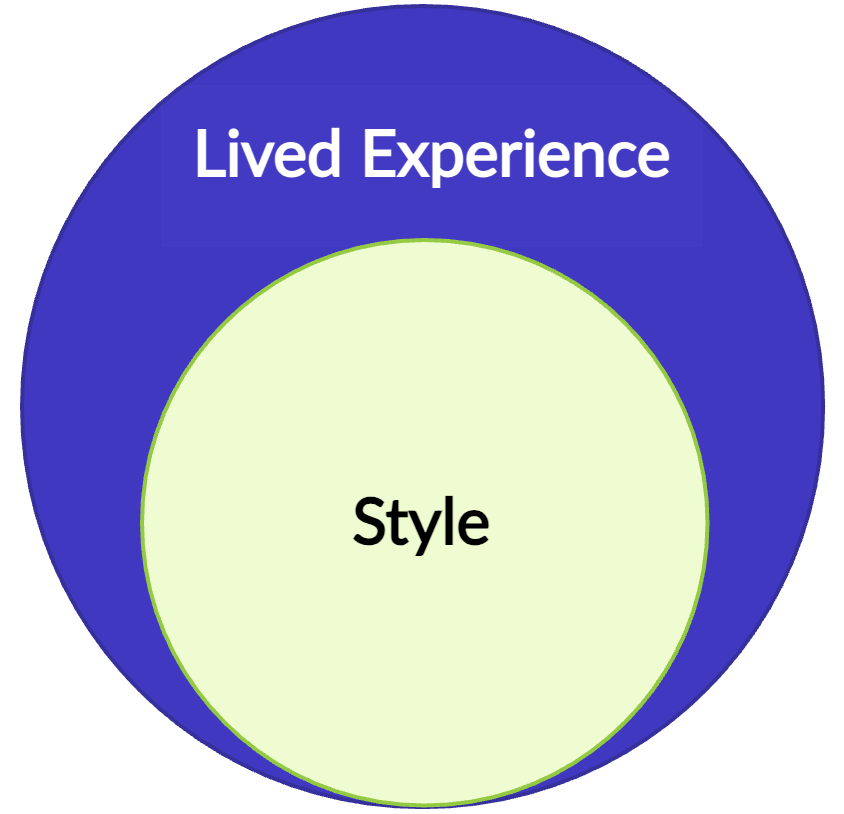Lived Experience

In the About section, I mentioned naïve set theory. Tossing up a mathematical theory in a discussion on style probably warrants a bit of explanation. I think the relationship between style and lived experience can be neatly represented using a Euler diagram where style sits within lived experience. Style is often thought of and discussed as something external, even superficial, like clothing, accessories, mode of travel, and such. The Premise here at Lived Experience is that style comes from within, that is, it is a manifestation of one’s – you guessed it – lived experience: scars, warts and all. Conversely, one cannot just put it on or simply buy it.

Despite the impeccably tidy Euler diagram, it’s a more complicated and complex – generally messier – approach to the topic because the scope of examination is virtually boundless and tying everything together is entirely dependent on the individual (namely, you) based on a unique set of nature and nurture. It’s not formulaic at all, even on a good day.
I will attempt to expound a bit more on the Premise in the next post, but I think it’s worth mentioning that the Premise’s key underlying assumption – or perhaps a prerequisite – is, as Jack London once said, ‘The proper function of man is to live, not to exist. I shall not waste my days in trying to prolong them. I shall use my time.’
Or, I actually prefer Hunter S. Thompson’s version as told in The Proud Highway: Saga of a Desperate Southern Gentleman, 1955-1967: ‘Life is not a journey to the grave with the intention of arriving safely in a well preserved body, but rather to skid in broadside, thoroughly used up, totally worn out, and loudly proclaiming, “Wow what a ride!”’
Not only is style founded on lived experience, lived experience is necessary to understand style. Is that a fallacy? Perhaps. Either way, I should think that it would be a solecism to take it too seriously. In the meantime, one should enjoy the sort of good food and drink that will enhance one's lived experience.
2023-10-20